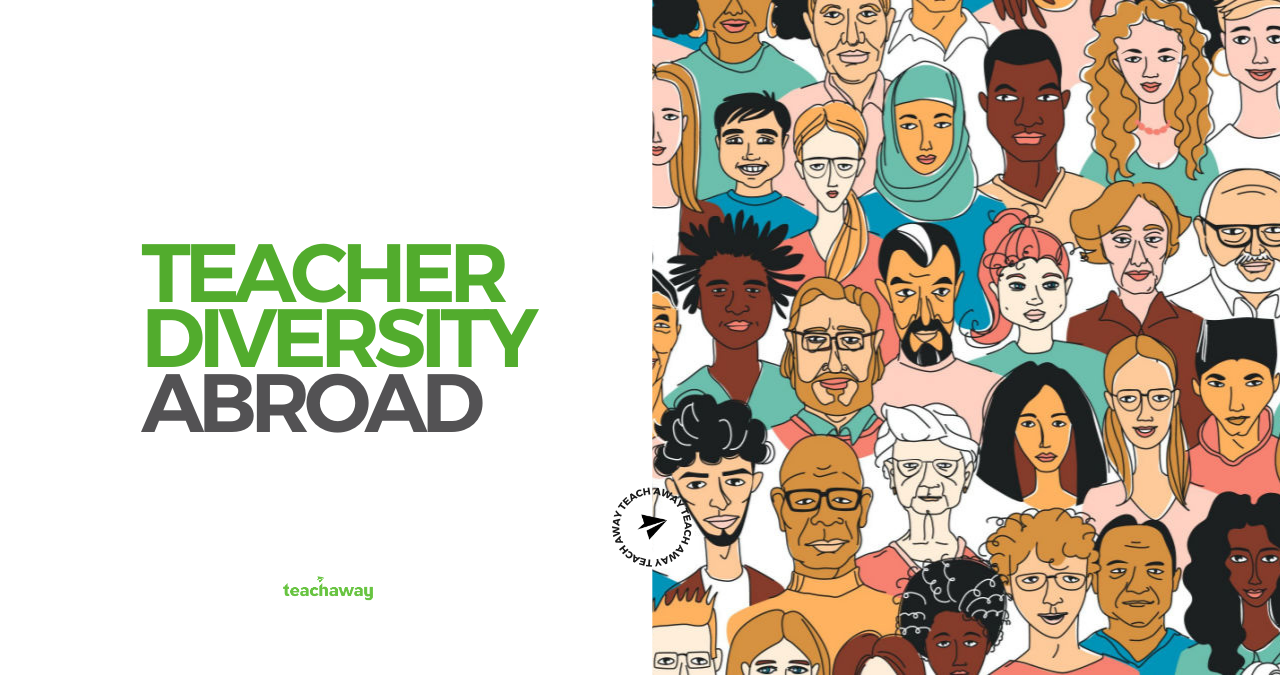No matter who you are, everyone who teaches abroad represents diversity. By definition, a foreign teacher is someone who has different experiences and perspectives from those around them.
One of the main advantages of having foreign teachers is simply giving students the opportunity to engage with people from different countries and cultures.
Even more than that, people from different gender, sexuality, racial, ethnic, or cognitive backgrounds can provide a wealth of new experiences to their students. Every little bit makes the world a smaller place.
There are, unfortunately, complications. Not all countries welcome all identities. There are many places that discriminate against LGBTQ people or people of color, even though their skills as teachers would enrich their communities.
Many countries do, however, embrace teachers from all walks of life, and the education they provide is made all the better because of it.
In this article, we will discuss:
- What Is Diversity and Representation?
- Benefits of Diversity and Representation
- Different Kinds of Identities and Foreign Teaching
- How to Improve Diversity and Representation
What is Diversity and Representation?
Although the two terms are often used interchangeably, there is a slight difference.
Diversity refers to having many different kinds of people in an organization or community. It is all about variety.
Representation refers to having different people in all different roles of an organization. It has more to do with equality.
For example, if a school had many LGBTQ employees, but they were all janitors, it would have diversity but poor representation. But if some of those employees were also teachers and administrators, the school would have better representation of the LGBTQ population.
This is why diversity and representation are important. One without the other would be imbalanced.
Benefits of Diversity and Representation in Foreign Teaching
Institutions which comprise a diverse and representative community provide several benefits to students, including:
- Enhancing Cultural Understanding and Empathy
- Exposing Students to Diverse Perspectives and Experiences
- Fostering Inclusive Learning Environments
- Increasing Cognitive Development and Problem Solving Skills
Enhancing Cultural Understanding and Empathy
Most foreign teachers teach ESL. But learning a language is about much more than just grammar and vocabulary.
Language learning also takes soft skills, such as cultural understanding and empathy. Consider the fact that “Break a leg” means good luck in some contexts.
Having a diverse and representative workforce provides students with ample opportunity to practice these soft skills by engaging with people who have very different experiences from them.
Exposing Students to Diverse Perspectives and Experiences
As the world becomes more and more connected, understanding diverse perspectives and experiences is becoming a core skill for 21st century careers.
In many parts of the world, students may have never met a foreigner, someone of a different race or ethnicity, or an open member of the LGBTQ community. Doing so will help them participate more effectively in global society.
Fostering Inclusive Learning Environments
Feeling left out or not represented is a major impediment to learning and pursuing further education. Having an inclusive learning environment can help students of any background feel more confident in participating.
Diverse and representative learning environments encourage active participation and engagement. They also create a sense of belonging for students from diverse backgrounds.
Increasing Cognitive Development and Problem-solving Skills
By exposing students to different viewpoints and experiences, diverse and representative environments enhance critical thinking skills. Students have to think carefully about how their teacher’s experiences may contribute to their teaching style and personality.
Different Kinds of Identities and Foreign Teaching
People from virtually any identity or background can become successful teachers. Some examples of the diverse kinds of identities people have include:
- Gender
- Sexuality
- Race and Ethnicity
- Neurodiversity
- Ability Status
Gender and Foreign Teaching
It goes without saying that about half the world’s population are women or girls. But in many parts of the world, women teachers are rare, and young girls may see few academic role models. More women foreign teachers can help fill the gap.
Additionally, there are very few trans teachers almost everywhere. Acceptance of trans people varies quite a bit. Even in a country like Thailand, where there is a long history of trans acceptance, there is often poor representation of trans people across important positions in society.
Ultimately, having a diverse range of gender representation in the teaching body helps to show students the diverse range of gender experiences that human beings can have.
Sexuality
The broad spectrum of human sexuality is present in every country, although it may not be as visible or accepted as much as it should be everywhere.
Students with minority sexual identities often feel alone or confused, especially in an environment where their status is not accepted. Having a teacher who is open about who they are can go a long way in fostering confidence.
Race and Ethnicity
North America is one of the most diverse places on the planet. In much of the United States, it is simply an everyday reality that you will constantly interact with people of a different race or ethnicity.
In much of the rest of the world, this is not the case. Many countries, such as China or Iceland, are extremely homogeneous, especially in rural areas.
People living in such places may have never seen a person with a different skin tone than theirs. It can be a surprising learning experience just to meet someone of a different race.
Neurodiversity
Everyone’s brain works a little bit differently. It is only just now starting to become common in some countries to accept people who may be classified under a cognitive spectrum like ADHD or Autism.
Although such conditions entail challenges in fitting in with society, they can also bring rewards. Many people with ADHD or Autism are incredibly creative, and are capable of seeing the world in a slightly different way from everyone else.
Many countries have poor awareness of neurodiversity. As a teacher in China, I had a few students who definitely fell somewhere along the Autism spectrum, but were not recognized as such.
Although they were intelligent, they struggled in class because they had difficulty fitting in. Greater awareness of neurodiversity could have created a healthier learning environment for each of them.
Ability Status
Disability can take on a variety of forms, such as visual or auditory impairment, any kind of paralysis, chronic illness, and more. People who have disabilities often live successful lives, and it is not uncommon for them to become teachers.
Having a teacher who is disabled can go a long way in showing students what life is like for them. This is especially important, because anyone can become disabled at any time in their lives.
Challenges and Strategies for Promoting Diversity and Representation in Foreign Teaching
Promoting diversity and representation should be a goal of every educational institution. But pursuing this path can be difficult.
The first step is to identify and address biases and stereotypes. This may be difficult in situations where you have little control, but if you are a teacher, you can try to address your own shortcomings in this area.
Recruiting and retaining diverse foreign teachers is the most direct way to promote representation. Administrators and principals who are in such a position should make an effort to do so.
Finally, everyone can encourage collaboration and partnerships, when applicable.
Diversity and Representation Helps Everyone
Having a diverse institution helps everyone involved, not just people of color, members of the LGBTQ community, women, neurodivergent people, or any other group of people.
Students benefit when they are challenged by experiences and perspectives they are not used to. They are also supported when they see someone like them in a consequential role like teaching.
Ultimately, foreign teaching is all about showing students what the rest of the world is like. And in an increasingly diverse and complicated world, representation by different groups can go a long way.



